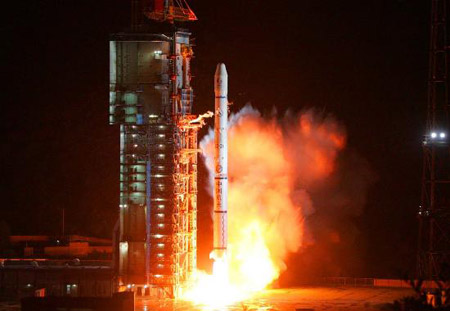China launches communications satellite "SinoSat-3"
(Xinhua)Updated: 2007-06-01 08:41
XICHANG, Sichuan Province -- China on early Friday morning launched "SinoSat-3", a communications satellite for radio and television broadcasting, aboard a Long March-3A carrier rocket, marking the 100th flight of its Long March series.
The satellite, launched from the Xichang Satellite Launch Center in the southwest Sichuan province at 0:08 a.m. (Beijing Time), separated from the rocket about 24 minutes after lift-off, before entering the geosynchronous orbit, data from the northwest Xi'an Satellite Control center show.
SinoSat-3 and its carrier rocket, were mainly developed and manufactured by the China Academy of Space Technology and the China Academy of Launch Vehicle Technology, both under the China Aerospace Science and Technology Corporation.
Its predecessor SinoSat-2, China's first direct-to-home satellite, was launched on October 29 last year. It was revealed a month later that it failed to deploy its solar panels and communication antennae and was deemed inoperable, the Sino Satellite Communications Co. Ltd. (SinoSat), a Chinese satellite operator and the user of the SinoSat series, has said.
A substitute satellite for the failed SinoSat-2 will take at least three years to develop, with more technical upgrades, according to a SinoSat spokesman last November.
It is not clear whether SinoSat-3 will replace part of the service of SinoSat-2.
China has 12.6 million digital TV subscribers and 400 million television sets, suggesting a huge potential market for satellite TV.
SinoSat-1, launched in July 1998, was bought from France mainly to undertake China's radio and TV broadcast and communications services in the Asia-Pacific Region.
|
||
|
||
|
|

